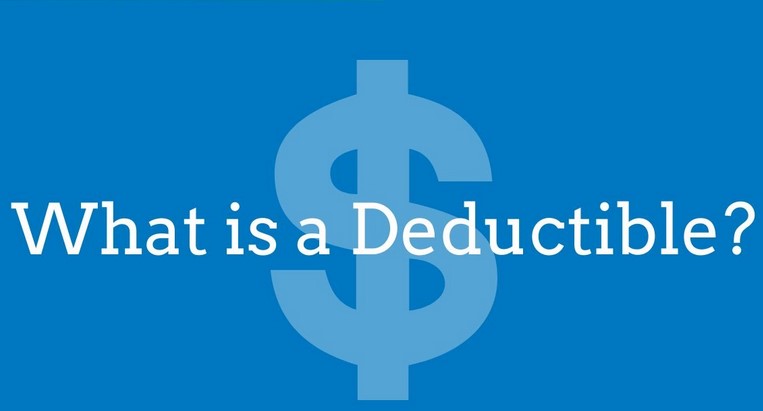What is an Insurance Deductible?

Insurance is a crucial aspect of financial planning, providing a safety net in times of unexpected events. Understanding the components of an insurance policy is essential to make informed decisions and navigate the complexities of coverage. One such component that plays a pivotal role in insurance policies is the deductible.
An insurance deductible is a predetermined amount of money that an insured individual must pay out of pocket before their insurance coverage kicks in. In essence, it is the initial financial responsibility borne by the policyholder before the insurance company starts covering the remaining costs. Deductibles can apply to various types of insurance policies, such as health insurance, auto insurance, and homeowners insurance. The specific amount of the deductible is outlined in the insurance policy and can vary depending on the type of coverage and the terms agreed upon.
Understanding the mechanics of deductibles is crucial to comprehend how much financial responsibility policyholders have in different scenarios. For example, in the case of a car accident, if the insurance policy has a $500 deductible, the policyholder must pay $500 upfront before the insurance company contributes to the repair costs. This arrangement serves as a form of risk-sharing between the insured individual and the insurance provider.
Having a clear understanding of insurance deductibles is vital for policyholders to make informed decisions about their coverage. The choice of a deductible amount can directly impact the premium costs of an insurance policy. Typically, higher deductibles result in lower premiums, while lower deductibles lead to higher premiums. This trade-off allows individuals to tailor their insurance plans based on their financial capabilities and risk tolerance.
Moreover, understanding deductibles empowers policyholders to manage their finances effectively. By knowing the amount they are responsible for in the event of a claim, individuals can budget accordingly and plan for potential out-of-pocket expenses. This knowledge also aids in making decisions about when to file a claim, considering both the deductible and the potential impact on future premiums.
The Basics of Insurance Deductibles
How Does an Insurance Deductible Work?
Insurance deductibles form a fundamental component of insurance policies, serving as the predetermined amount an insured individual must pay out of pocket before their insurance provider starts covering eligible expenses. This amount acts as a form of shared responsibility between the policyholder and the insurer. The concept operates on the principle that individuals should bear a portion of their insurance costs, fostering a sense of financial responsibility.
The relationship between insurance deductibles and premiums is crucial to understanding their dynamics. Generally, policies with higher deductibles tend to have lower premiums, and vice versa. This inverse relationship allows policyholders to tailor their insurance coverage based on their risk tolerance and financial capabilities. Opting for a higher deductible often results in reduced monthly premiums, providing a cost-saving strategy for those willing to assume a greater financial burden in the event of a claim.
Types of Insurance Deductibles
Percentage-Based Deductibles
Percentage-based deductibles operate on a proportionate basis, calculated as a percentage of the total claim amount. For instance, if a policy has a 10% deductible and the claim is $5,000, the policyholder is responsible for $500. This type of deductible is commonly found in health insurance policies. While percentage-based deductibles align with the overall claim amount, they may pose a financial challenge in the case of high-value claims.
Fixed Amount Deductibles
Fixed amount deductibles involve a predetermined, fixed sum that policyholders must pay before insurance coverage kicks in. This straightforward approach provides clarity for policyholders, enabling them to anticipate their out-of-pocket expenses. Unlike percentage-based deductibles, the fixed amount remains constant regardless of the claim’s total value. This type of deductible is prevalent in auto and homeowners’ insurance.
Pros and Cons of Each Type
Both percentage-based and fixed amount deductibles present advantages and drawbacks. Percentage-based deductibles offer flexibility and are proportional to the claim, but they can lead to unpredictable out-of-pocket expenses. On the other hand, fixed amount deductibles provide clarity and stability, allowing policyholders to plan for specific costs. However, they may result in higher upfront expenses for certain claims. Selecting the most suitable type depends on individual financial circumstances, risk tolerance, and the nature of the insurance coverage needed. Understanding these nuances empowers individuals to make informed decisions when choosing insurance policies tailored to their unique needs.
Factors Influencing Insurance Deductibles
Insurance Policy Types
Health Insurance Deductibles:
Health insurance deductibles apply to medical expenses covered by the policy. Policyholders must meet the deductible before the insurance starts covering eligible healthcare costs. Deductibles can differ based on the plan chosen, and higher deductibles often lead to lower premium costs.
Auto Insurance Deductibles:
In the realm of auto insurance, deductibles come into play when filing a claim for vehicle damage. Typically, policyholders can select a deductible amount, and the insurance company covers the remaining costs. The choice of deductible influences premium rates; a higher deductible often results in lower premiums.
Homeowners Insurance Deductibles:
Homeowners insurance policies feature deductibles for property-related claims, such as damages from natural disasters or theft. Similar to auto insurance, policyholders can opt for different deductible levels, impacting the overall cost of coverage.
Choosing the Right Deductible
Balancing Premiums and Deductibles:
Selecting the right deductible involves finding a balance between upfront out-of-pocket expenses and ongoing premium payments. A higher deductible tends to lower premiums but may lead to increased financial responsibility in the event of a claim. Conversely, a lower deductible often means higher premiums but less financial burden when filing a claim.
Assessing Personal Financial Situation:
Individuals must assess their financial capability to cover the chosen deductible in case of a claim. A higher deductible may be suitable for those with a robust financial cushion, while a lower deductible might be preferable for individuals seeking more immediate assistance with potential claims.
Common Misconceptions
When it comes to insurance, there are several misconceptions that often cloud the understanding of certain key concepts, particularly the insurance deductible.
Myth vs. Reality
One prevailing misconception is the belief that “Higher Deductibles Mean Lower Premiums.” Contrary to popular belief, opting for a higher deductible doesn’t necessarily translate to lower premiums. While a higher deductible can potentially lower monthly premium costs, it’s essential to weigh this against the increased out-of-pocket expense in the event of a claim.
Another common misunderstanding is the notion that “I Don’t Need to Pay My Deductible If Not at Fault.” In reality, regardless of fault, policyholders are typically responsible for their deductible when filing a claim. The at-fault party’s insurance may eventually reimburse these costs, but initially, the deductible is the policyholder’s responsibility.
Clarifying Deductible Terms
Understanding the terminology associated with deductibles is crucial for making informed decisions about insurance coverage.
Understanding Out-of-Pocket Maximum:
The out-of-pocket maximum is the maximum amount a policyholder is required to pay in a policy period. This includes both the deductible and co-insurance. Once this limit is reached, the insurance company covers the remaining eligible expenses.
How Deductibles Relate to Coverage Limits:
Deductibles are closely tied to coverage limits. It’s essential to be aware of the coverage limits specified in your policy, as these can influence how much financial responsibility falls on you as the policyholder, especially when it comes to deductibles.
Strategies for Managing Deductibles
Effective management of deductibles involves employing smart strategies to optimize coverage and financial responsibility.
Bundling Insurance Policies
Cost Savings and Benefits:
Bundling insurance policies, such as combining auto and home insurance, can often lead to cost savings. Insurance providers may offer discounts as an incentive for consolidating policies.
Considerations Before Bundling:
Before bundling, it’s crucial to carefully consider the coverage needs for each policy. While bundling can be advantageous, it’s equally important to ensure that each individual policy provides sufficient coverage for specific risks.
Saving for Deductibles
Creating an Emergency Fund:
Establishing an emergency fund is a proactive way to prepare for unexpected expenses, including insurance deductibles. Having a financial safety net can alleviate the financial strain associated with meeting deductible requirements.
Budgeting Tips:
Incorporating insurance deductibles into your budget planning allows you to allocate funds specifically for potential claims. This ensures that you have the necessary resources set aside, reducing the financial burden when a claim arises.
FAQs About Insurance Deductibles
Do all types of insurance have deductibles?
Yes, most insurance policies, including health, auto, and homeowners, typically come with deductibles.
Can I change my deductible after purchasing insurance?
In many cases, yes. However, it’s essential to consult with your insurance provider to understand the implications.
Do deductible amounts vary by insurance providers?
Absolutely. Different insurers may offer varying deductible options. It’s advisable to shop around for the best fit.
How does a disappearing deductible work?
A disappearing deductible rewards policyholders with reduced deductibles over time if they remain claim-free.
Can a higher deductible lead to lower premiums?
Yes, opting for a higher deductible often results in lower premium payments.
Are deductibles applicable to all types of insurance claims?
While common, not all insurance claims require deductibles. For instance, liability claims may not involve deductibles.



